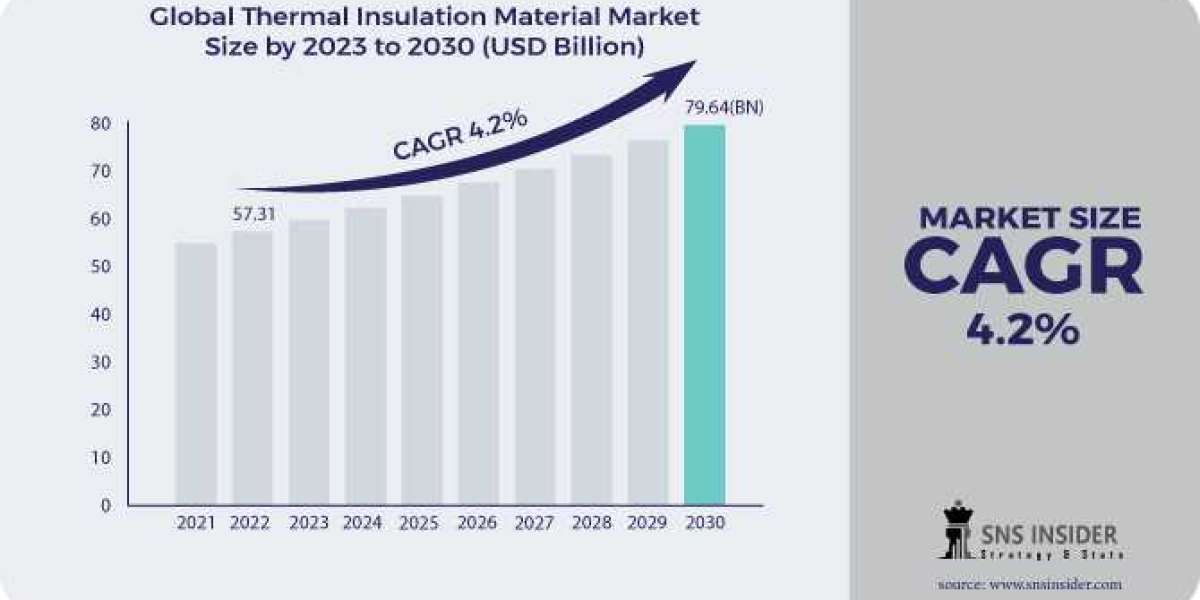The global thermal insulation material market, valued at USD 57.31 billion in 2022, is projected to reach USD 79.64 billion by 2030, growing at a CAGR of 4.2% from 2023 to 2030. This growth is driven by increasing energy efficiency standards and a rising demand for sustainable building materials. Technological advancements have resulted in the development of high-performance insulation products with enhanced thermal resistance and environmental benefits. The market's segmentation reveals diverse applications across various temperature ranges, catering to residential, commercial, and industrial needs. North America and Europe dominate due to stringent energy regulations and strong construction activities, while the Asia-Pacific region is expected to experience the fastest growth due to rapid urbanization and industrialization. Despite challenges like high initial costs and raw material price volatility, the market's future looks bright, driven by ongoing advancements and supportive government policies.
The global thermal insulation material market , valued at USD 57.31 billion in 2022, is projected to experience substantial growth over the coming years. According to recent market analysis, the market is expected to reach USD 79.64 billion by 2030, expanding at a compound annual growth rate (CAGR) of 4.2% from 2023 to 2030. This robust growth is driven by increasing demand across various industries, advancements in material technology, and stringent energy efficiency regulations.
Get Full Free PDF @ https://www.snsinsider.com/sample-request/1511
Market Segmentation
By Material Type
1. Plastic Foam: Known for its excellent insulation properties and lightweight nature, plastic foam is widely used in residential and commercial buildings. Its versatility and cost-effectiveness make it a preferred choice in the construction industry.
2. Stone Wool: Stone wool, or mineral wool, is favored for its fire-resistant properties and acoustic insulation capabilities. It is commonly used in industrial applications where high-temperature insulation is required.
3. Fiberglass: Fiberglass is another popular insulation material due to its non-combustible nature and high thermal resistance. It is extensively used in HVAC systems, automotive applications, and building construction.
4. Others: This category includes a variety of other materials such as aerogel, cellulose, and natural fibers. These materials are gaining traction due to their sustainable and eco-friendly characteristics.
By Temperature Range
1. (−160⁰C To −50⁰C): Insulation materials in this range are critical for cryogenic applications, including LNG storage and transportation.
2. (−49⁰C To 0⁰C): This range is essential for refrigeration and cold storage industries, ensuring energy efficiency and temperature stability.
3. (1⁰C To 100⁰C): Materials in this temperature range are widely used in building insulation and industrial processes where moderate temperature control is necessary.
4. (1⁰C To 650⁰C): High-temperature insulation materials are used in applications such as furnaces, boilers, and industrial equipment, where extreme heat resistance is required.
Regional Analysis
The thermal insulation material market is analyzed across several key regions, each contributing uniquely to market dynamics:
1. North America: North America remains a dominant player in the global market, driven by stringent energy efficiency regulations and substantial investments in building infrastructure. The region's emphasis on sustainable construction practices further fuels market growth.
2. Europe: Europe is witnessing significant growth in the thermal insulation material market due to strict building codes and energy conservation initiatives. Countries like Germany, France, and the UK are leading the adoption of advanced insulation technologies.
3. Asia-Pacific: The Asia-Pacific region is expected to exhibit the highest growth rate during the forecast period. Rapid urbanization, industrialization, and infrastructural developments in countries like China and India are key drivers of market expansion.
4. Latin America: Latin America is gradually emerging as a potential market for thermal insulation materials, with increasing construction activities and growing awareness about energy efficiency.
5. Middle East Africa: The Middle East Africa region is exploring advanced insulation materials to cope with extreme temperatures and improve energy efficiency in buildings and industrial sectors.
Market Drivers
Several factors are driving the growth of the thermal insulation material market:
·Energy Efficiency Regulations: Governments worldwide are implementing stringent regulations to reduce energy consumption in buildings and industrial processes. This has led to increased adoption of thermal insulation materials to comply with these standards.
·Growing Construction Industry: The booming construction industry, particularly in emerging economies, is a significant driver of market growth. The demand for energy-efficient and sustainable building materials is on the rise.
·Technological Advancements: Continuous advancements in material science have led to the development of high-performance insulation materials with superior thermal properties and environmental benefits.
·Environmental Awareness: Increasing awareness about environmental sustainability and the need to reduce carbon footprints are encouraging the use of eco-friendly insulation materials.
Challenges
Despite the promising growth prospects, the thermal insulation material market faces several challenges:
·High Initial Costs: The high initial cost of insulation materials can be a barrier for small and medium-sized enterprises, particularly in developing regions.
·Raw Material Price Volatility: Fluctuations in the prices of raw materials, such as petrochemicals used in plastic foam, can impact the overall cost and availability of insulation products.
·Lack of Awareness: In certain regions, there is a lack of awareness about the benefits of thermal insulation, leading to lower adoption rates.
Future Outlook
The thermal insulation material market is expected to witness sustained growth over the forecast period, driven by increasing investments in construction and industrial sectors, technological innovations, and favorable government policies. Market players are likely to focus on expanding their product portfolios, investing in research and development, and forming strategic partnerships to capitalize on the growing opportunities in the thermal insulation sector.
Conclusion
The global thermal insulation material market is on a robust growth trajectory, with substantial opportunities for market players across various segments and regions. As the world moves towards more energy-efficient and sustainable practices, the demand for advanced thermal insulation materials is set to rise, driving market expansion. Companies that innovate and adapt to changing market dynamics will be well-positioned to succeed in this evolving landscape.
For more detailed insights and comprehensive data, refer to the full report "Thermal Insulation Material Market Size, Share Segment By Material Type (Plastic Foam, Stone Wool, Fiberglass, Others), By Temperature Range ((−160⁰C To −50⁰C), (−49⁰C To 0⁰C), (1⁰C To 100⁰C), (1⁰C To 650⁰C)), And By Regions | Global Market Forecast 2023-2030."
Contact Us:
Akash Anand – Head of Business Development Strategy
Phone: +1-415-230-0044 (US) | +91-7798602273 (IND)
Read Related Reports:













